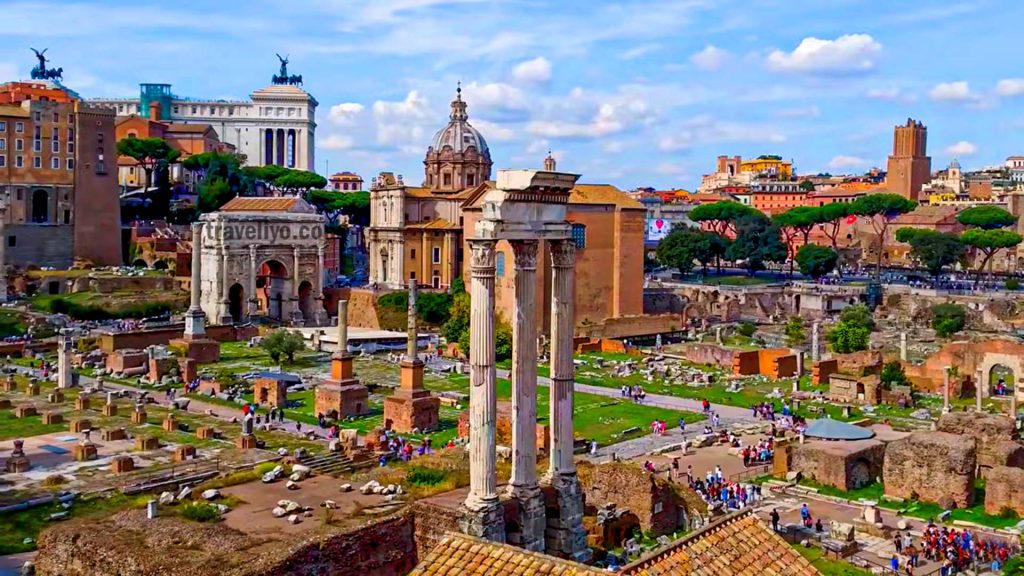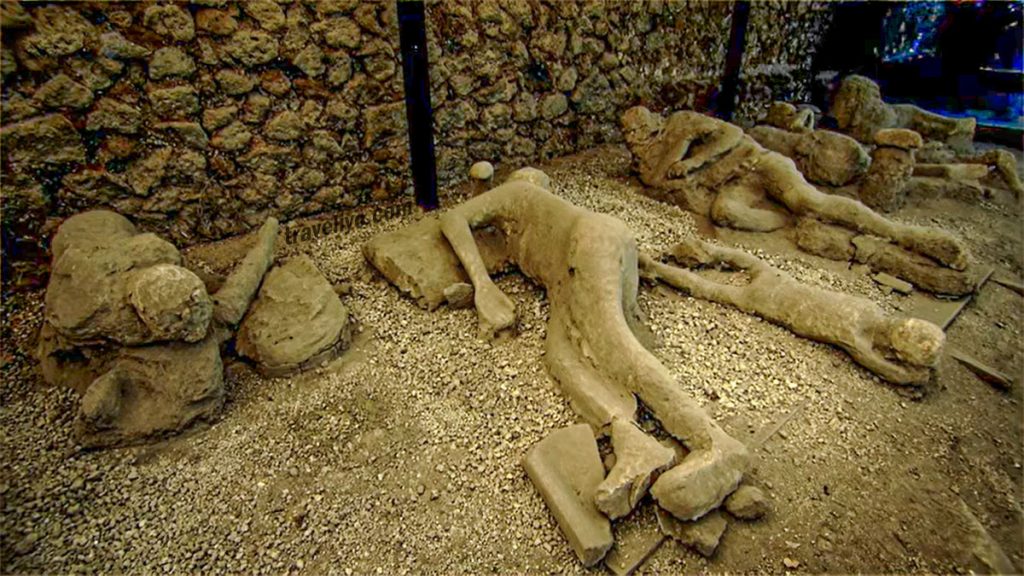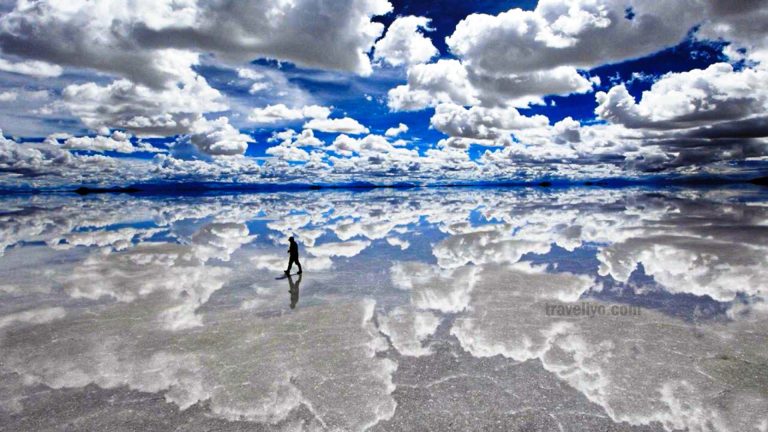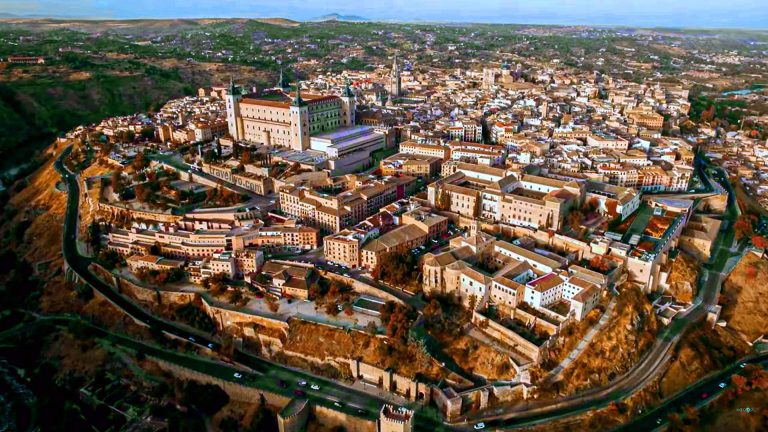Ancient Rome Travel Guide: Explore the Eternal City’s Wonders

Introduction: Discover the Timeless Legacy of Ancient Rome
Ancient Rome is one of the most iconic and historically rich destinations in the world. Often referred to as the “Eternal City,” Ancient Rome invites travelers into a breathtaking journey through time, filled with monumental ruins, timeless architecture, and cultural heritage that shaped Western civilization.
From the majestic Colosseum to the ancient streets of the Roman Forum and the grandeur of the Pantheon, Ancient Rome offers an unforgettable exploration of imperial history. This travel guide is specially crafted for tourists from the USA, UK, EU, and Scandinavian countries who wish to immerse themselves in the wonders of Ancient Rome.
Whether you’re a history enthusiast, architecture lover, or a curious traveler, Ancient Rome has something to offer everyone. Discover archaeological marvels, world-famous landmarks, and hidden gems, all while following practical tips to make your Roman holiday enriching and smooth.
Ancient Rome is more than 2,500 years old. Its enduring beauty lies in its crumbling piazzas, stone-paved roads, and structures that have stood the test of time. The Colosseum, a triumph of Roman engineering, remains a powerful symbol of Rome’s greatness. The Roman Forum, once the political heart of Ancient Rome, and the awe-inspiring Pantheon, still echo the brilliance of ancient Roman design.
The Rich History of Ancient Rome

The Founding and Early Days
Rome begins with a legendary man named Romulus. A princes gave birth to twin sons. The king, her wicked Uncle, fearing these boys would one day become his rivals, ordered his loyal servants to throw them to the river. Due to the floods in area, they just left them in a basket at the water’s edge hoping the kids wouldn’t survive. But the basket floated down the stream and rescued by a mother wolf. Later found by a kind shepherd who raised them as his own. They were named Romulus and Remis.
When the strong and brave decided to build a city, a fierce battle ensued, and Romulus killed Remis and founded the new city of Rome. In 753 BC, Romulus, the first of his kind in Rome, united his people and led them into battle. From tragedy to triumph, he laid the foundation for the city that was to rule the world. The story of Romulus marks the dawn of an extraordinary civilization. This is the legend of the beginning of Rome.
The linguistic root for the name Rome is derivation from the Greek Rhṓmē (Ῥώμη), meaning “bravery” or “courage”. Some also compare this with Rumon, the former name of the Tiber River.
Iconic Landmarks of Ancient Rome
Rome is a living museum, and its landmarks are windows into its glorious past.

Rome is a city full of history and culture, walk through the ancient Colosseum, visit the majestic Roman Forum and marvel at the magnificent Basilica, discover the beauty of St. Peter’s Basilica in the Vatican Museums and toss a coin at the Tevi Foundation. Rome’s ancient ruins, art and culture make it a timeless destination for history lovers.
01. The Colosseum
This amphitheater, completed in 80 AD, hosted gladiatorial games and public spectacles.
Visitor Tip: Visit early or late in the day to avoid crowds and capture stunning photos.

Romans build the Coliseum almost 2000 years ago. This massive amphitheater could hold 50,000 spectators who came to watch gladiators fight wild animals and even naval battles. Later this was viewed as a political tool, entertaining Roman citizens was used to distract citizens from real issues. A symbol of power or control.
02. The Roman Forum
Once the political and social heart of Rome, the Forum is now a sprawling complex of ruins.
Must-See: The Arch of Titus and the Temple of Saturn.

The Roman Forum is a rectangular square located in the center of Rome, Italy, surrounded by the ruins of several important ancient government buildings and temples. It served as the political and social center of the Roman Empire during its heyday and is considered one of the most important archaeological sites in the world. The Roman Forum was once the center of Roman public life, where citizens would gather to participate in public events, political debates, and religious ceremonies. The Roman Forum was also the site of many important historical events, such as the funeral of Julius Caesar and the speeches of Cicero.
03. The Pantheon
This architectural masterpiece, built in 126 AD, boasts a dome that remains a marvel of engineering.
Interesting Fact: The oculus at its center is the building’s only source of light.

The Pantheon was built around 126 AD. It is a testament to ancient Roman engineering and architectural innovation. Its most striking feature is its massive dome, which remains the largest unreinforced concrete dome in the world. The oculus in its center allows natural light to flood the interior, and the design uses a perfect mathematical ratio of height to diameter, giving the dome a harmonious appearance. Originally a temple to all the Roman gods, the Pantheon symbolized the greatness of the empire. Its coffered ceiling adds aesthetic beauty while reducing weight. Today, it continues to inspire architects and visitors alike with its timeless beauty.
04. Palatine Hill
As the mythological birthplace of Rome, Palatine Hill offers a glimpse into imperial luxury.

One of the most famous of the seven hills of Rome, the Palatine Hill is deeply rooted in Roman mythology and history. It is located in central Rome, between the Roman Forum and the Circus Maximus. Origin of the name: From the Latin palatium. It later became the root of the word palace, considered the birthplace of Rome and the site of many imperial palaces. Elite Residence: By the late Republic, it had become the neighborhood of Rome’s aristocracy. Gardens were among the first botanical gardens in Europe, built on ruins in the late 16th century. Overlooking the Roman Forum and the Circus Maximus – strategically and symbolically important. The hill was extensively terraced for palaces. Today, the Palatine Hill is an open archaeological site.
05. The Baths of Caracalla
A symbol of Roman engineering and leisure, these baths are a testament to the importance of public spaces.

Built in 212 AD on the orders of Emperor Caracalla, the Baths of Caracalla were a symbol of Rome’s wealth and power. The massive complex could accommodate up to 1,600 people at a time. It featured a large central hall with a pool, saunas and steam rooms, known for its luxurious decoration and sophisticated design. In particular, its complex heating system demonstrated a high level of Roman engineering, perfectly regulating the temperature of the baths. The Baths of Caracalla were not only a place for hygiene, but they were also a center for social interaction among Roman citizens. Even today, these baths play a crucial role in understanding the magnificent architecture and socio-cultural development of ancient Rome.
Roman Engineering: A Legacy of Innovation
The Romans were pioneers of engineering, leaving behind innovations that still amaze us.

Imagine a city without water. One of the most iconic features of history is how Rome’s early engineers solved that problem. Aqueducts, which stretched across ancient Italy, brought clean water directly from distant springs to Roman cities, fueling everything from public baths to fountains. The aqueducts, which existed mainly between the 4th century BC and the 1st century AD, were marvels of precision engineering. They used gravity alone to move water over hundreds of miles. Roman construction even included underground tunnels to ensure a steady flow.
01. Aqueducts
Roman aqueducts supplied cities with fresh water, enabling urban growth and public baths.

It was previously mentioned that the Romans built aqueducts to transport fresh water from distant sources to their cities and towns, demonstrating the fascination of the Roman aqueducts and engineering marvels that changed the course of history 2,000 years ago. Aquac Claudia for example was one of the longest and most impressive aqueducts spanning over 68 km 42 Mi and consisting of both underground and above ground. These structures were constructed using stone, brick and concrete. They crossed valleys and mountains. The rivers were over 50 million miles long. The water supplied by these aqueducts was essential for drinking, bathing and irrigation. It allowed cities like Rome to grow. At its peak, it boasted a population of over a million. The aqueducts were so well-built that some still stand today.
A testament to Roman engineering. Roman aqueducts not only delivered water, but also life and prosperity. Their innovation laid the foundation for the modern water supply systems that we still rely on.
Notable Example: The Aqua Claudia, which served Rome for centuries.
02. Roads and Infrastructure
The saying “All roads lead to Rome” highlights the extensive network of roads built to connect the empire.

The secret to Rome’s vast reach lay not only within its legions but also beneath their feet, a vast network of roads stretching for 400,000 kilometers. Intricately constructed to connect every corner of the empire, these roads had multiple layers for durability and smoothness. The design was so effective that many of these roads remain in perfect condition today. These roads were the lifeblood of the empire. Bustling with traveling merchants and the mighty Roman army, the Appian Way stood out among these, marching with a common purpose under the banner of Rome. Established in 312 BC, it was not just a road. It was a statement of power and engineering.
03. Concrete and Architecture
Roman concrete, or opus caementicium, was a revolutionary material used in structures like the Pantheon and Colosseum.

the Romans were Pioneers in Concrete Construction and their secret recipe for Roman concrete Opus centium is one of the reasons many of their structures like the pantheon and aqueducts still stand today interestingly their concrete used volcanic ash which reacts with seawater to strengthen over time unlike modern concrete that deteriorates this durability is why Roman Harbor
structures remain intact after 2,000 years of submersion
Art and Culture of Ancient Rome
01. Sculpture and Painting
Roman art was deeply influenced by Greek traditions but emphasized realism.


The civilization that ruled ancient Italy before the Romans were the Etruscans, who mastered metalworking, art, jewelry, and hydraulic systems. Their language remains a mystery, partly deciphered as it is unique or of mixed origin. As the Roman Republic grew, they integrated through conquest and cultural mixing. As a result, urban planning, customs, and other cultural influences were introduced to Rome. The Etruscans lived throughout ancient Rome, and they never left.
Highlight: Busts of emperors and frescoes in villas.
02. Religion and Mythology
Romans worshipped a pantheon of gods, later transitioning to Christianity in the 4th century.
Roman religion was a fascinating mix of traditional politics and mythology. The Romans worshipped Jupiter as the king of the gods and a pantheon of gods and goddesses, including Juno Manura and Mars. Temples were the heart of religious life, with priests performing sacrifices and rituals to keep the gods happy. Public festivals were large-scale events celebrating everything from harvests to military victories. Religion was deeply intertwined with Roman politics. The emperor was often seen as having divine favor. The story of Ramulus and Remis explained the origins of Rome. Others, such as the Journey of Annas, connected the history of Rome to the larger mythological world that was ancient Roman culture.
Temples to Visit: The Temple of Jupiter and the Temple of Vesta.
03. Entertainment
From gladiator games to theater, Romans valued public entertainment.
The Romans loved gladiatorial games. The games began as funeral rites in 264 BC. Although blood was shed to honor the dead, the Romans turned it into entertainment with swords, crowds, and drama. Emperors used games to control the masses, to give them blood and bread, and to keep them loyal. So yes, from honoring the dead to epic displays of power, history has taken a different path.
Exploring Modern Rome’s Ancient Roots
Rome is a city where ancient and modern coexist beautifully.
Rome is a city where the past and the present coexist in harmony. Ancient ruins stand next to modern buildings, creating a unique mix of old and new. This unique location is part of what makes Rome so fascinating. The Colosseum and the Vatican are symbols of Rome’s historical and cultural significance. But the city is constantly evolving, embracing modernity while preserving its heritage. Rome’s streets are filled with contemporary art, trendy cafes, and bustling markets. These modern elements add vibrancy to the city’s rich historical tapestry for Romans. The city’s history is not just a backdrop, but an integral part of their identity. They are proud of their heritage, but also embrace change and innovation.
Food and Drink
Indulge in authentic Roman cuisine, from pasta dishes like Carbonara to desserts like Tiramisu.
Have you heard of carbonara? Carbonara is one of the four Roman pasta dishes that many people love. It’s a very sweet dish. If you want to try one of those dishes, you have to go to this place.
Shopping and Markets
Visit markets like Campo de’ Fiori for souvenirs and local produce.
Campo de’ Fiori is a busy square in the historic center of Rome, Italy. It is called Campo de’ Fiori. It was once a meadow outside the city and today it is a lively center of activity with a daily open-air market selling a variety of goods, including fresh produce, flowers, spices, and souvenirs. It has a long history. It dates back to the 19th century. In addition to the market, it is a popular destination for both locals and tourists. It is also a great place to stop for a meal or a drink at night, as it is also home to several restaurants and cafes. Campo de’ Fiori creates a different kind of atmosphere. The market stalls give way to street performers and lively crowds, creating a different atmosphere.
Nightlife Among Ruins
Modern bars and restaurants offer views of ancient ruins, blending history with leisure.
Let’s now take a look at what nightlife was like in ancient Rome. How could it be? Ordinary people often spent their nights in taverns and bars, where they indulged in gambling and games. The streets of Rome were noisy with carts, which deprived residents of sleep. Those who went out at night were at risk of getting drunk. For the elite nightlife, brawlers who were ready to cause trouble offered more refined options, such as banter and drinking contests. Many citizens chose not to go out alone at night or to avoid areas known for high crime rates.
Accommodation in Rome
Luxury:- $400+ (all-inclusive resort, private tours, fine dining)
Located in the city centre, Casa Monti Roma is 14 km from Rome Ciampino Airport. Nearby attractions include Quirinal Hill (8-minute walk), Piazza Venezia (less than 1 km), and the Colosseum (1 km).
Casa Monti Roma in Rome offers a 5-star hotel experience with spa facilities, a sun terrace, and a lush garden.
Couples particularly like the location — they rated it 9.8 for a two-person trip.
Breakfast info : Buffet
02. Singer Palace Hotel Roma – $505
Singer Palace Hotel Roma is located right on the famous Via del Corso shopping Street. Set 350 metres from Trevi Fountain.
Pantheon is a 5-minute walk from the property, while Piazza Venezia is 300 metres away. Rome Ciampino airport is 40 minutes’ drive from the Singer Palace Hotel Roma.
À la carte homemade breakfast is available daily with fresh products. Guests can also enjoy Italian cuisine and seafood dishes for lunch and dinner.
Couples particularly like the location — they rated it 9.9 for a two-person trip.
Hotel Colosseum is set in a quiet street in the city center. The roof terrace offers unforgettable views of ancient Rome. The Coliseum and the Santa Maria Maggiore Basilica are just a short walk away.
Breakfast is a varied buffet.
“Close to most of the hop on hop off buses, and the Colosseum. The breakfast I serve in the morning was very good. Had a wide selection.”
Hotel Mid-Range:- $150–$300 (3-star hotel, some tours, mix of local and international food)
01. Hotel Scalinata di Spagna – $152
You could visit the top attractions like Piazza del Popolo, Piazza del Popolo, Palazzo Venezia, and Villa Borghese gardens within the radius of 2km from hotel Hotel Scalinata Di Spagna. Situated in the real heart of Rome. The lift to Spagna Metro Station is 50 meters away.
Breakfast info : Continental, Italian, Full English/Irish, Gluten-free, American, Buffet
Set at the top of the Spanish Steps leading to Trinità dei Monti. Couples particularly like the location. This hotel has an excellent location with a score of 9.6. One review said “The location of the hotel is perfect and within walking distance of all the main tourist places. The room was a good size and clean, not too loud…”
Most of the main attractions are within 2km range from the hotel Rome Times. Elegant Via Nazionale, a 10-minute walk from Trevi Fountain, the Spanish Steps and the Coliseum.
Location of the hotel is close to metro stations is also an added advantage.
The rooms and suites feature wooden floors, double soundproof windows, and large beds with 26-cm-thick hypoallergenic mattresses and top-quality linens. The stylish bathrooms are equipped with a tub or large shower. Each room offers handmade furniture designed specifically for the hotel and a bar cabinet with a kettle for teas and herbal teas. Some rooms are in the annex building.
Couples particularly like the location — they rated it 9.1 for a two-person trip.
Breakfast info : Continental, Italian, American, Buffet
03. The Independence Hotel – $208
You will be in the center of Rome, located in the heart of Rome within reach of 2km to most famous attractions. 150 meters from the Baths of Diocletian and Termini Train Station. Situated in the real heart of Rome, this hotel has an excellent location. The rooftop terrace offers city views. Couples particularly like the location — they rated it 8.9 for a two-person trip.
Breakfast info : Continental, Italian, American, Buffet
“The hotel is very cozy and in very good location, very beautiful roof restaurant and bar with a beautiful outdoor seating area, staff were very..
Budget Traveler:- $50–$100 (hostel, local meals, public transport)
Hotel Camelia is in a prime location. Attractions like Colosseum and Vatican City located within 3km of the hotel. You could reach Villa Borghese Gardens just in 15-minute walk, while Plazza Barberini situated within the 1 km vicinity. Another advantage of hotel’s location is its only 8-minute walk to Rome Termini Metro Station and 800meters to nearby Termini Train Station. Situated in the real heart of Rome, this hotel has an excellent location score of 8.7
Want a great night’s sleep? This hotel was highly rated for its very comfy beds.
Hote Varese is situated proximity to Sacro Monte Unesco di Varese, a religious site and UNESCO World Heritage Site. Located only 300 meters from Termini Train Station. The Hotel Varese has excellent public transport links around Rome and to both international airports. From Termini you can catch both Metro lines, which take you to the Coliseum and the Trevi Fountain in just 2 stops.
Hotel Varese offers a 24-hour reception and free Wi-Fi in the lobby. All rooms are air conditioned and feature satellite TV and a minibar. Situated in the real heart of Rome, this hotel has a Collegiate excellent location score of 9.2.
Breakfast Info : Continental, Italian, Gluten-free, American
03. TH Roma – Carpegna Palace – $98
Most of the attractions such as St Peter’s Square, Castel Sant’Angelo, Campo de’ Fiori, and Piazza Navona situated with the 5km radius from the Carpegna Palace. Surrounded by a lush garden with centuries-old trees, TH Roma – Carpegna Palace is 200 metres from Cornelia Metro Station, on Rome’s line A.
Breakfast info : Continental, Italian, Gluten-free, American, Buffet
Rooms are decorated in a modern style, and include a minibar
Couples particularly like the location
Top location: Highly rated by recent guests (8.3)
Day Trips to Enhance Your Visit
01. Tivoli
Explore Villa Adriana and Villa d’Este, UNESCO World Heritage sites.

A number of fascinating ancient Roman artifacts can be found in the ruins of Hadrian’s Villa in Tivoli, Italy. One of the most intriguing is a bronze head of Medusa, a Greek monster who could turn people to stone.
The bronze head is believed to be around 120 AD. When the villa was built by the Roman emperor Hadrian, the snakes emerging from Medusa’s hair intricately described her haunting face.
This is a different kind of sculpture. While it may have been artistic, it is not certain whether it was a warning in the gardens. Accordingly, the sculpture is a mystery.
What we do know is that this bronze Medusa head is a unique example of ancient Roman metalwork and offers a clear glimpse into the luxurious tastes of one of Rome’s most glamorous emperors.
02. Ostia Antica
This well-preserved ancient port town offers a quieter alternative to Rome’s crowds.

Ostia Antica was once the empire’s busiest port. Located about 30 minutes from modern Rome, today it’s a time capsule. Cobblestone streets, ancient baths, theaters, and even Roman fast food joints. You can still see colorful mosaics and Roman apartment buildings that date back nearly 2,000 years.
03. Pompeii and Herculaneum
A trip to these cities, frozen in time by Mount Vesuvius, is a must for history enthusiasts.

In 79 AD, Mount Vuvius roared to life. Pompei, a vibrant Roman city, vanished under tons of ash and pummus in hours. Life frozen in time. A bustling world silenced. Today, its ghostly streets
whisper tales of that fiery day. A city unearthed. A tragedy preserved.
Practical Travel Tips
Best Time to Visit: Spring and fall offer mild weather and fewer crowds.
The best time to visit Rome is from April to June and from September to October. The weather is pleasant and the number of tourists is low during this time. There are also tourists in July and August. But it is very hot during this time. Therefore, Rome is the least enjoyable.
Language: While English is widely spoken, learning basic Italian phrases is helpful.
Did you know what the language of the Roman Empire was? The official language of Rome was Latin. It can be said that the influence of Latin is still present in modern languages and terminology.
Transportation: Rome’s metro and buses are efficient for navigating the city.
Metro buses and trams will get you where you need to go quickly.
Conclusion
A journey to Ancient Rome is a walk through history, offering insights into a civilization that shaped the world. Whether marveling at the Colosseum, wandering the Roman Forum, or enjoying modern Rome’s charm, your trip will be unforgettable.
Start planning today and immerse yourself in the legacy of the Eternal City!
With this article and the facts you have heard about Ancient Rome, you may be interested in walking through the streets of Ancient Rome. Here you will have the opportunity to step into the Eternal City at the Colosseum, where 880,000 Romans cheered. Marvel at epic gladiatorial battles at the Temple of Apollo, and explore the Roman Forum, a 2,000-year-old architectural marvel with its stunning dome. The heart of ancient Rome’s political and social life, stroll through lively streets filled with markets, shops, and the hustle and bustle of daily life. Travel back in time and see the grandeur of Rome like never before. Plan your itinerary today. Transform your life with a new experience.
Did this guide help you? Have you also visited Ancient Rome? Share your experience in the comments below – it will be very valuable for other travelers.







